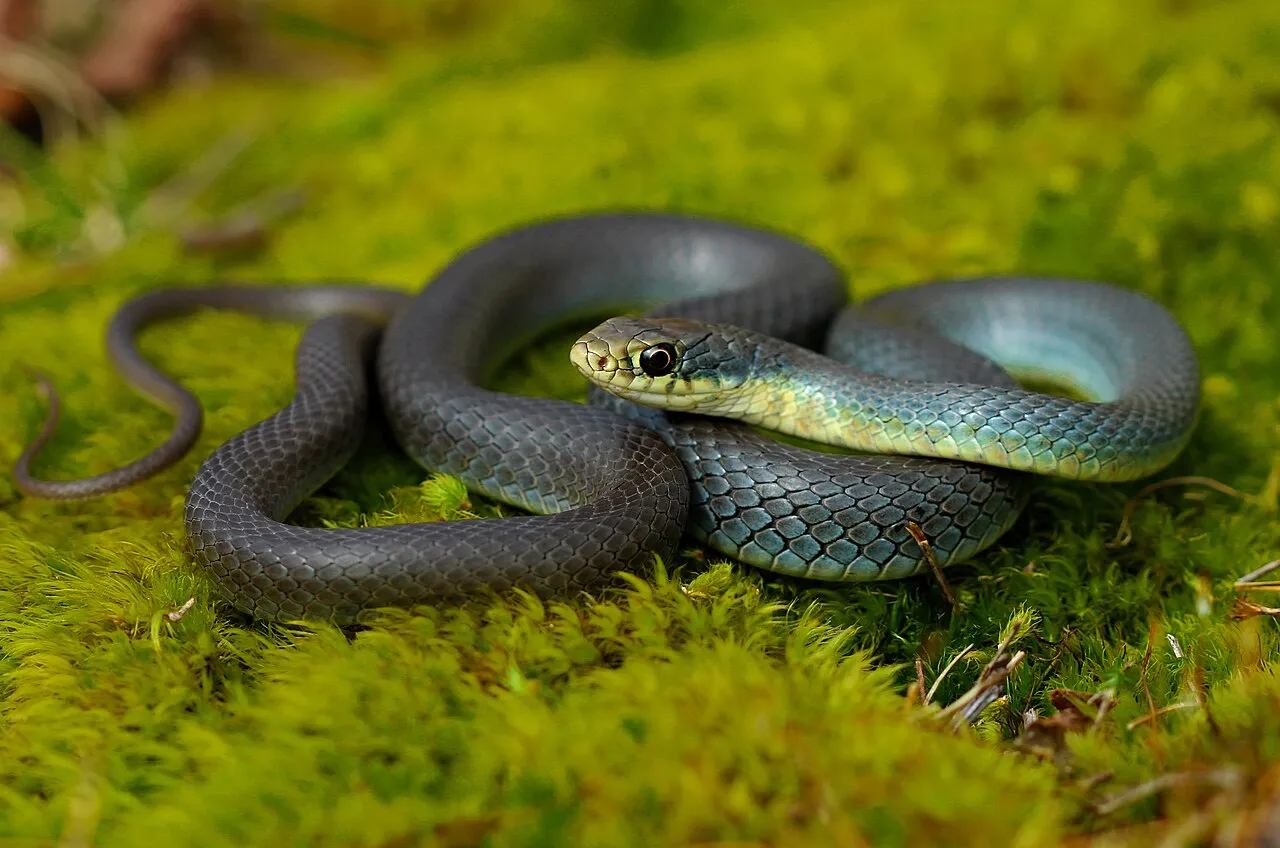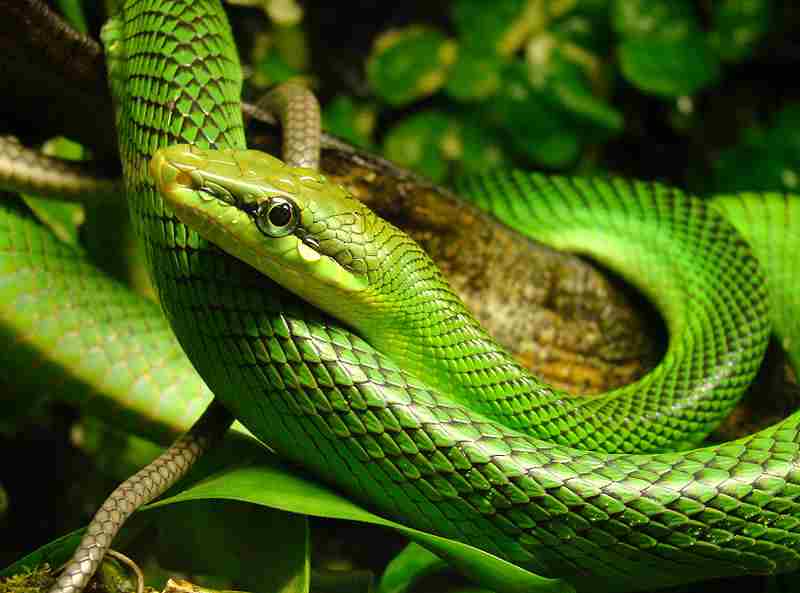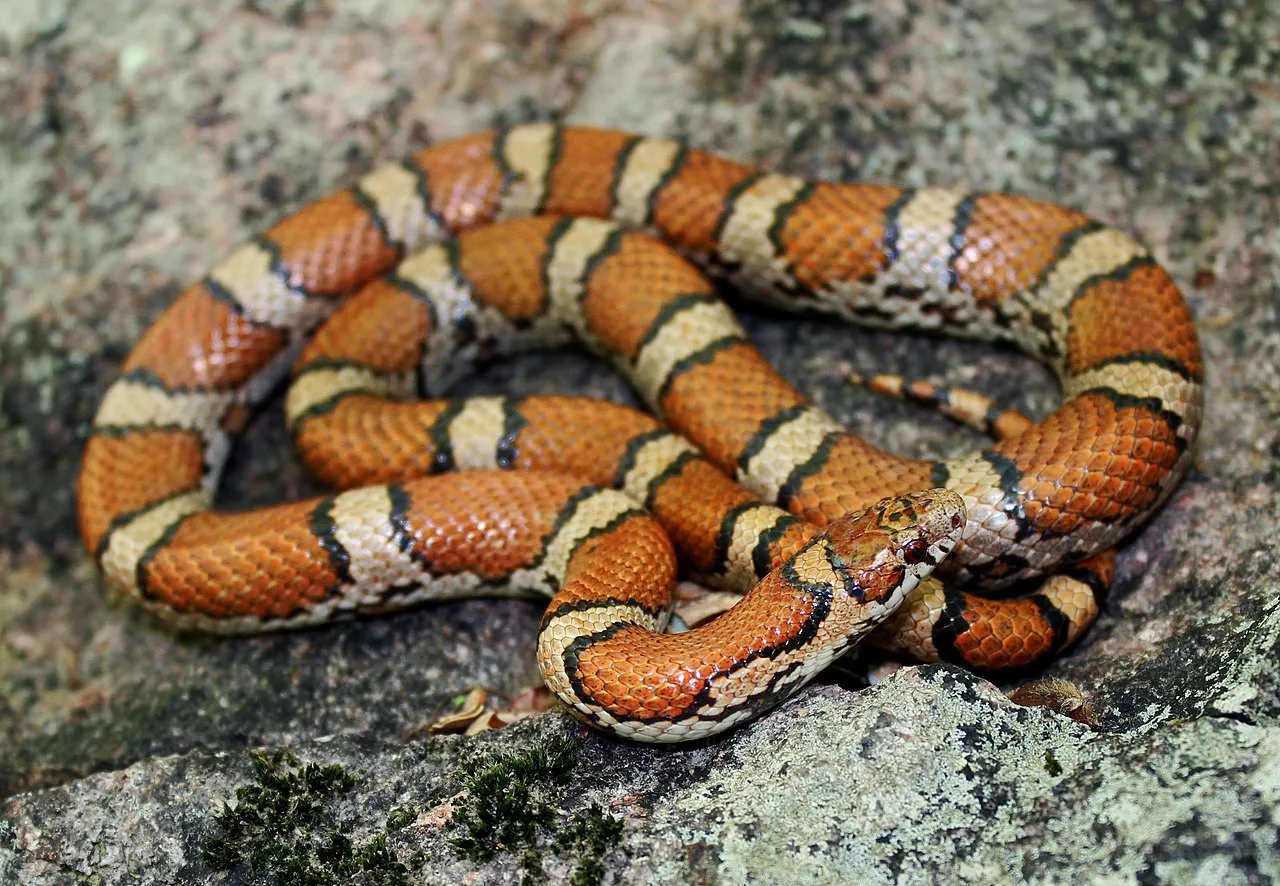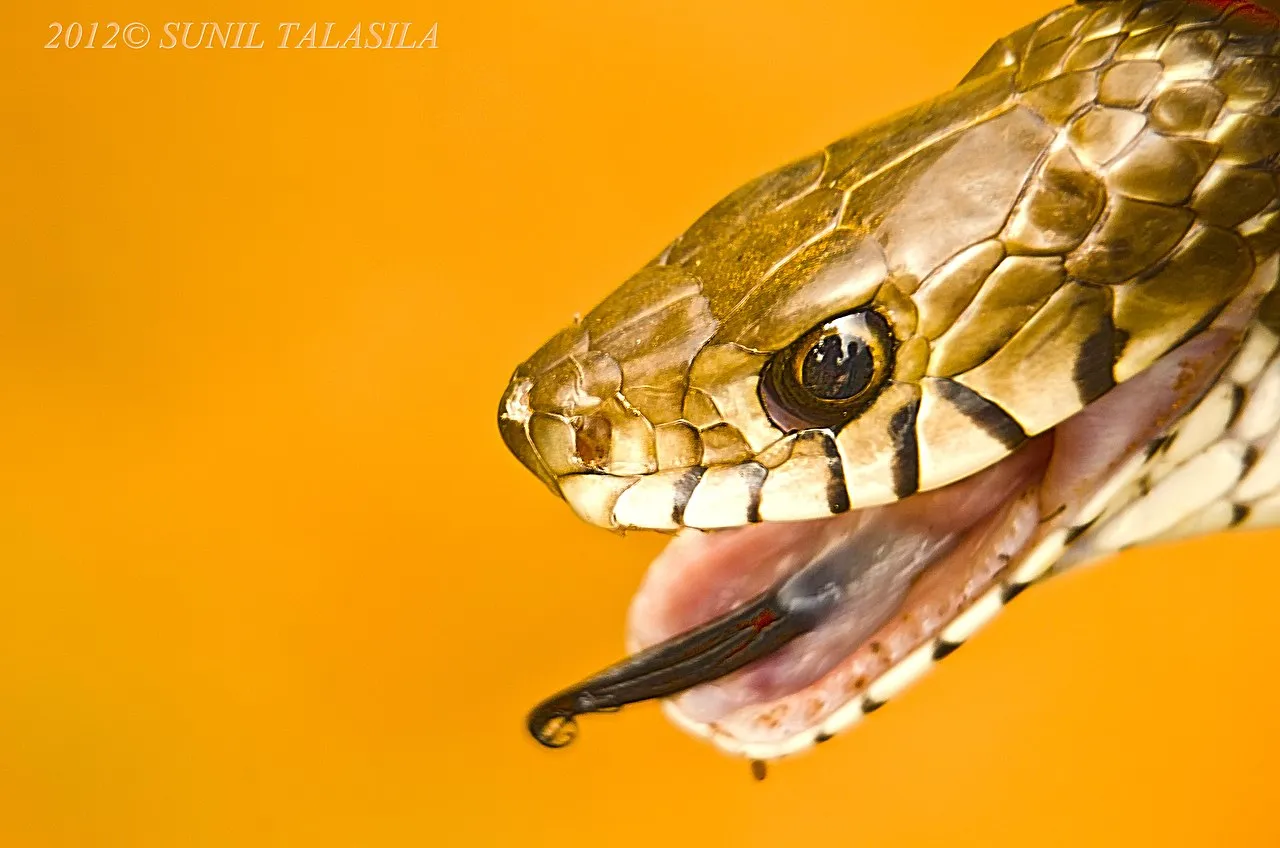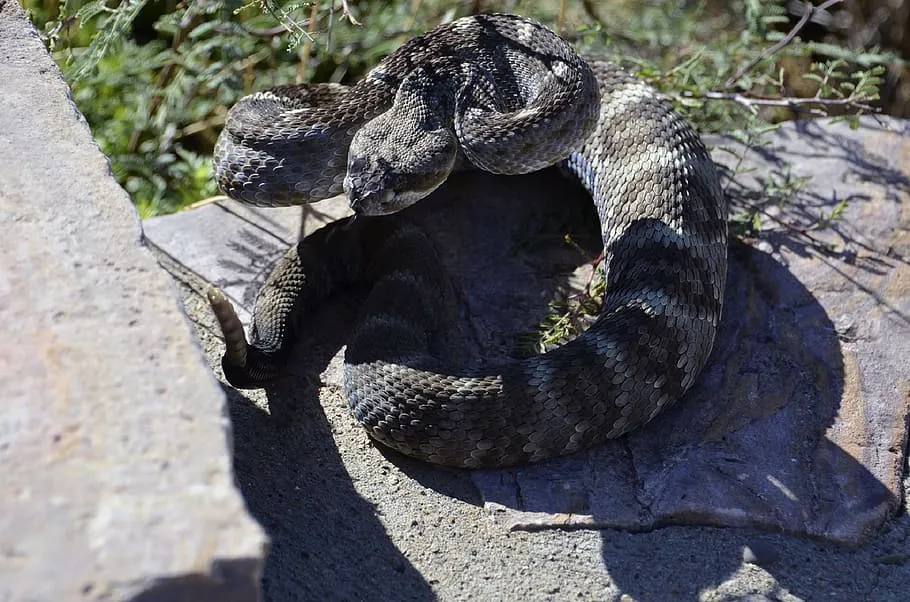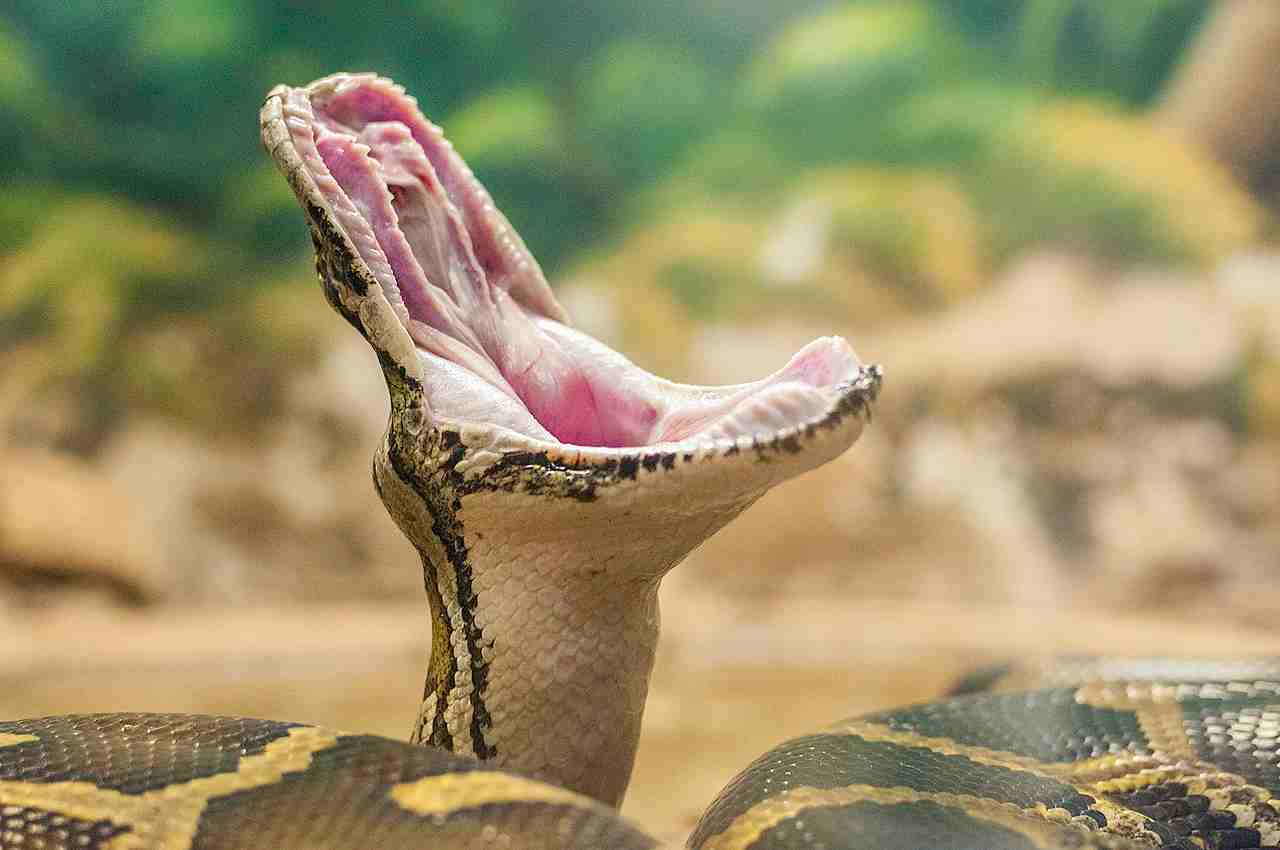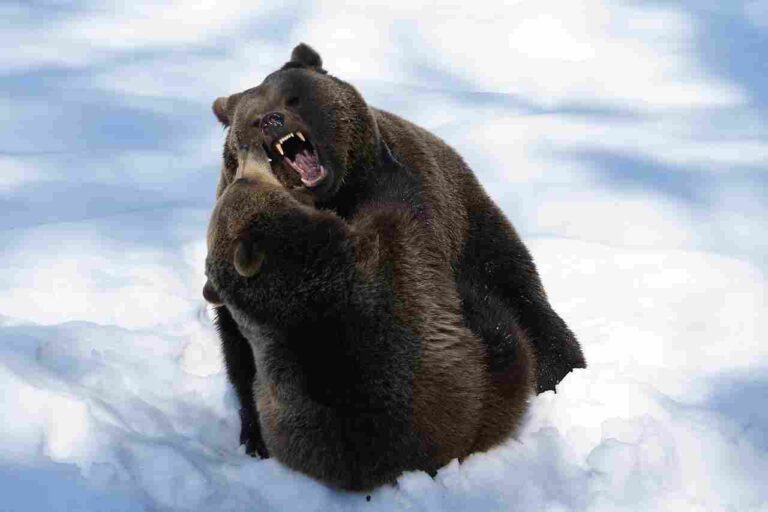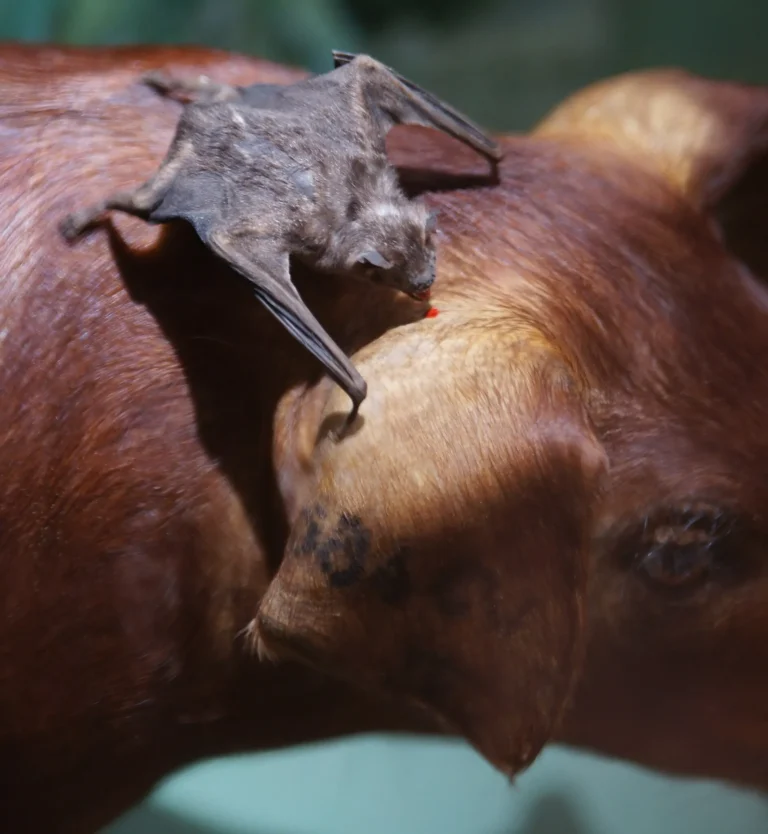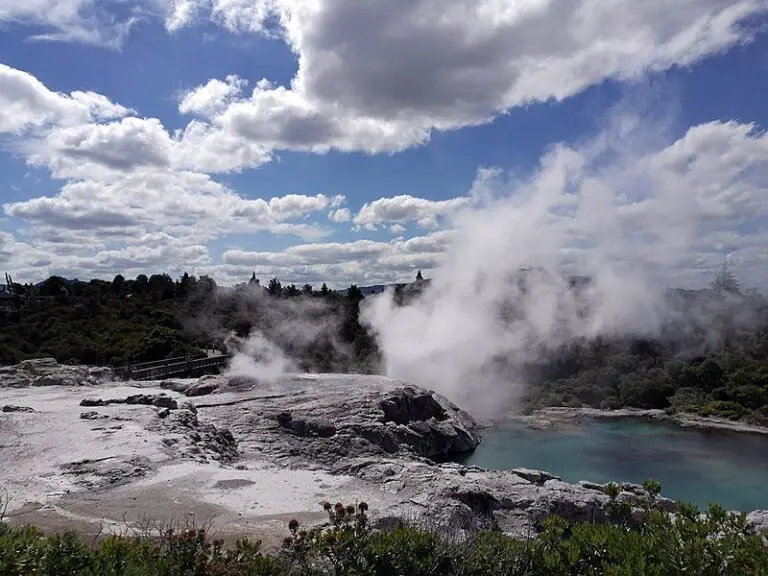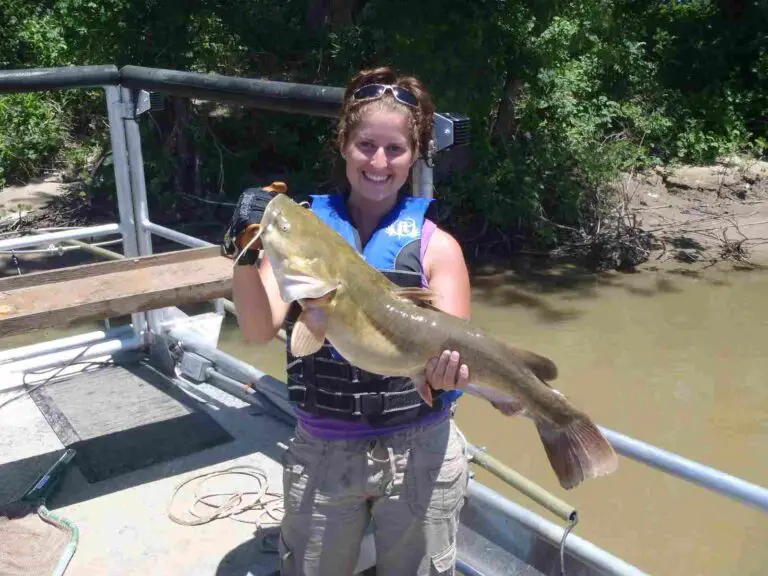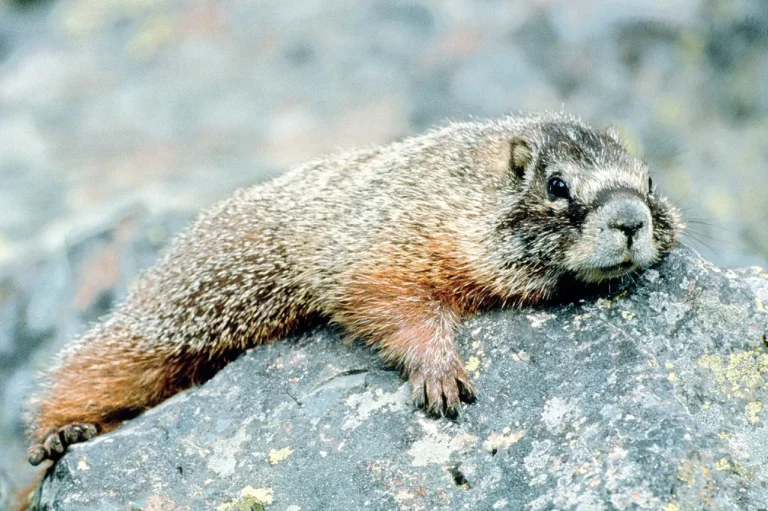Mojave Green Snake Description, Facts, Characteristics
The Mojave green snake, classified as Crotalus scutulatus, is a species of venomous pit viper found in the southwestern United States and northern Mexico. It exhibits unique adaptations such as venomous fangs, vibrant green coloration, and nocturnal behavior, which influence its role in controlling prey populations and maintaining ecological balance within its habitat. Conservation efforts aim to preserve its populations and habitat integrity to ensure its continued contribution to ecosystem dynamics.
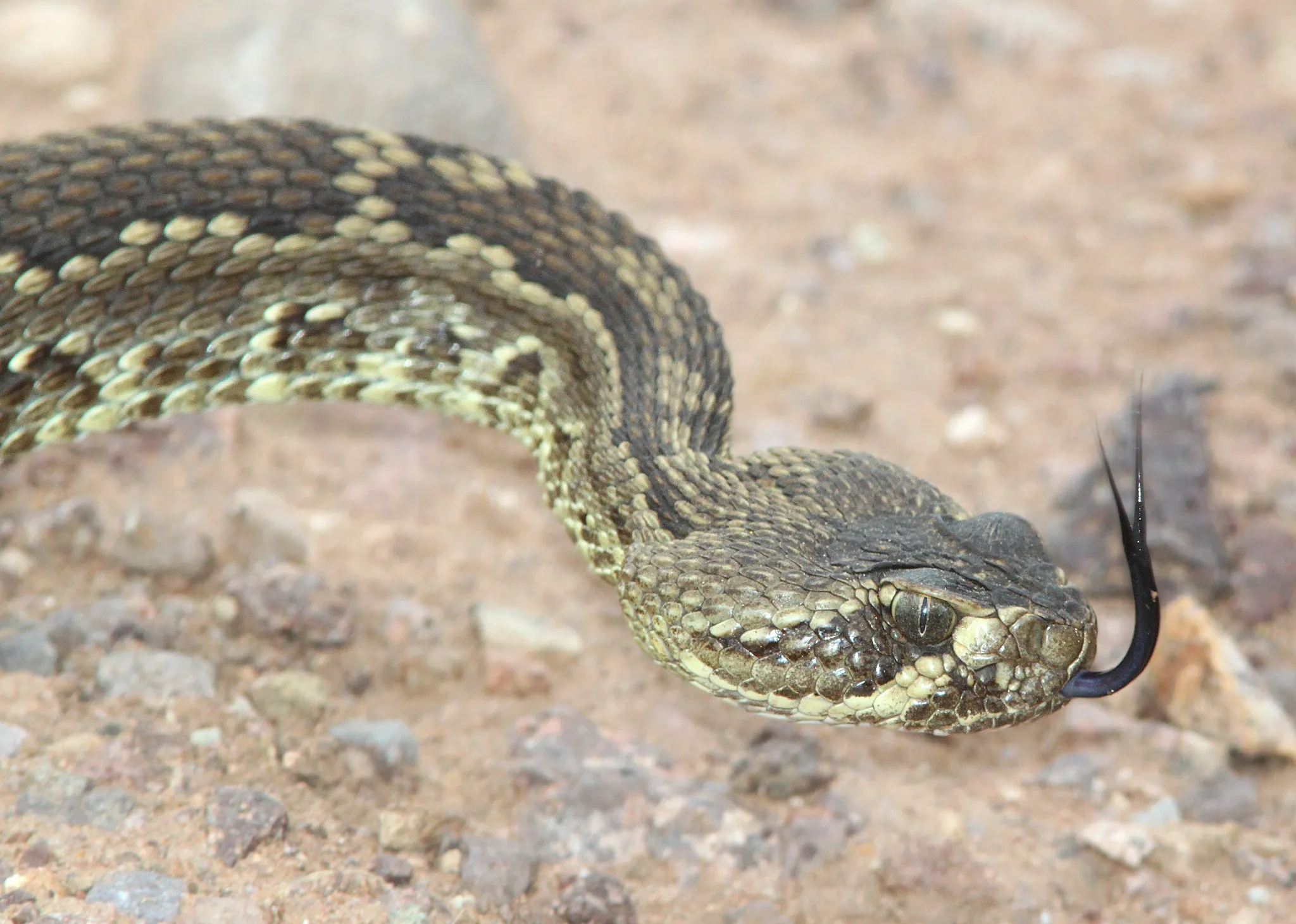
Facts About the Mojave Green Snake
- The Mojave green snake belongs to the Animalia kingdom.
- It is classified under the Chordata phylum.
- Within the Reptilia class, it belongs to the Squamata order.
- The family it belongs to is Colubridae.
- Its genus is Crotalus.
- The specific species is Crotalus scutulatus.
- Mojave green snake has subspecies known as Crotalus scutulatus scutulatus.
- They typically measure between 3 to 4 feet in length.
- Their weight ranges around 1 to 2 pounds.
- Mojave green snakes have vibrant green coloration with light crossbands.
- They possess long, hollow fangs connected to venom glands.
- Their bite force is estimated to be around 100-150 pounds per square inch (psi).
- Mojave green snakes primarily feed on small mammals, lizards, and occasionally birds.
- They are terrestrial and nocturnal, relying on stealth and camouflage for hunting.
- Mojave green snakes inhabit arid and semi-arid regions, often found in rocky areas for shelter.
- They give birth to live young and have a lifespan of around 10 to 15 years in the wild.
| Topic |
Details, Importance, and Ecological Implications
|
| Scientific Classification |
– Kingdom: Animalia – Phylum: Chordata – Class: Reptilia – Order: Squamata – Family: Colubridae – Genus: Crotalus – Species: Crotalus scutulatus
|
| Subspecies |
– Mojave green snake (Crotalus scutulatus scutulatus) – Understanding subspecies aids in conservation by tailoring strategies to unique populations. – Different adaptations may affect their ecological roles.
|
| Size and Weight |
– Length: 3 to 4 feet – Weight: 1 to 2 pounds – Size impacts prey selection and ecological niche. – Weight influences position in the food web and interactions with other species.
|
| Appearance and Identification |
– Vibrant green coloration with light crossbands – Triangular head and elliptical pupils – Unique appearance aids in species identification for conservation purposes. – Coloration serves as camouflage for survival.
|
| Dentition and Bite Force |
– Long, hollow fangs connected to venom glands – Bite force: 100-150 psi – Venomous nature influences prey populations and predator interactions. – Bite force affects predator-prey dynamics.
|
| Diet |
– Primarily small mammals, rodents, lizards, and occasionally birds – Helps regulate prey populations and maintains ecological balance. – Feeding habits influence ecosystem dynamics.
|
| Behavior |
– Terrestrial and nocturnal – Ambush predators relying on camouflage – Behavior affects niche and interactions with other species. – Nocturnal behavior reduces competition with diurnal predators.
|
| Sounds/Vocalization |
– Limited vocalizations, may hiss when threatened – Reliance on other sensory cues for communication and survival. – Lack of vocalization influences predator avoidance strategies.
|
| Habitat |
– Arid and semi-arid regions, including deserts and scrublands – Preference for rocky areas with shelter – Habitat selection influences distribution and interactions with other species.
|
| Geographic Range and Distribution |
– Found in southwestern US and northern Mexico – Presence in states like California, Nevada, Arizona, Utah, and parts of New Mexico. – Range influences ecosystem composition and dynamics.
|
| Tracks |
– Distinctive tracks in sandy or loose soil – Monitoring tracks provides insights into behavior and population dynamics. – Tracks inform about distribution and activity patterns.
|
| Reproduction |
– Ovoviviparous with mating in spring and birth in late summer or fall – Understanding reproductive biology aids in population management. – Reproduction affects population dynamics and genetic diversity.
|
| Lifespan |
– Lifespan of 10-15 years in the wild, longer in captivity – Lifespan influences population turnover rates and genetic diversity. – Knowledge of lifespan aids in conservation planning.
|
| Major Adaptations |
– Venomous fangs, cryptic coloration, and nocturnal behavior – Adaptations enhance survival and ecological role. – Influence interactions with prey, predators, and competitors.
|
| Conservation Status |
– Listed as least concern by IUCN – Threats include habitat loss and human persecution. – Conservation efforts aim to maintain healthy populations and ecosystem balance.
|
| Domestication and Suitability |
– Not suitable as pets due to venomous nature and specialized care. – Recognizing unsuitability promotes responsible pet ownership. – Discouraging pet trade helps in wildlife conservation.
|
1. Scientific Classification:
Kingdom: Animalia
Phylum: Chordata
Class: Reptilia
Order: Squamata
Family: Colubridae
Genus: Crotalus
Species: Crotalus scutulatus
2. Subspecies:
Mojave green snake (Crotalus scutulatus scutulatus)
Importance: Understanding subspecies helps in conservation efforts by identifying unique populations and tailoring conservation strategies accordingly.
Ecological Implications: Different subspecies may have varying adaptations to local environments, affecting their role in ecosystems and interactions with other species.
3. Size and Weight:
Mojave green snakes typically measure between 3 to 4 feet in length.
They weigh around 1 to 2 pounds.
Importance: Size and weight impact their prey selection, predator avoidance strategies, and overall ecological niche.
Ecological Implications: Size influences their position in the food web and can affect their interactions with other species, such as predators and prey.
4. Appearance and Identification:
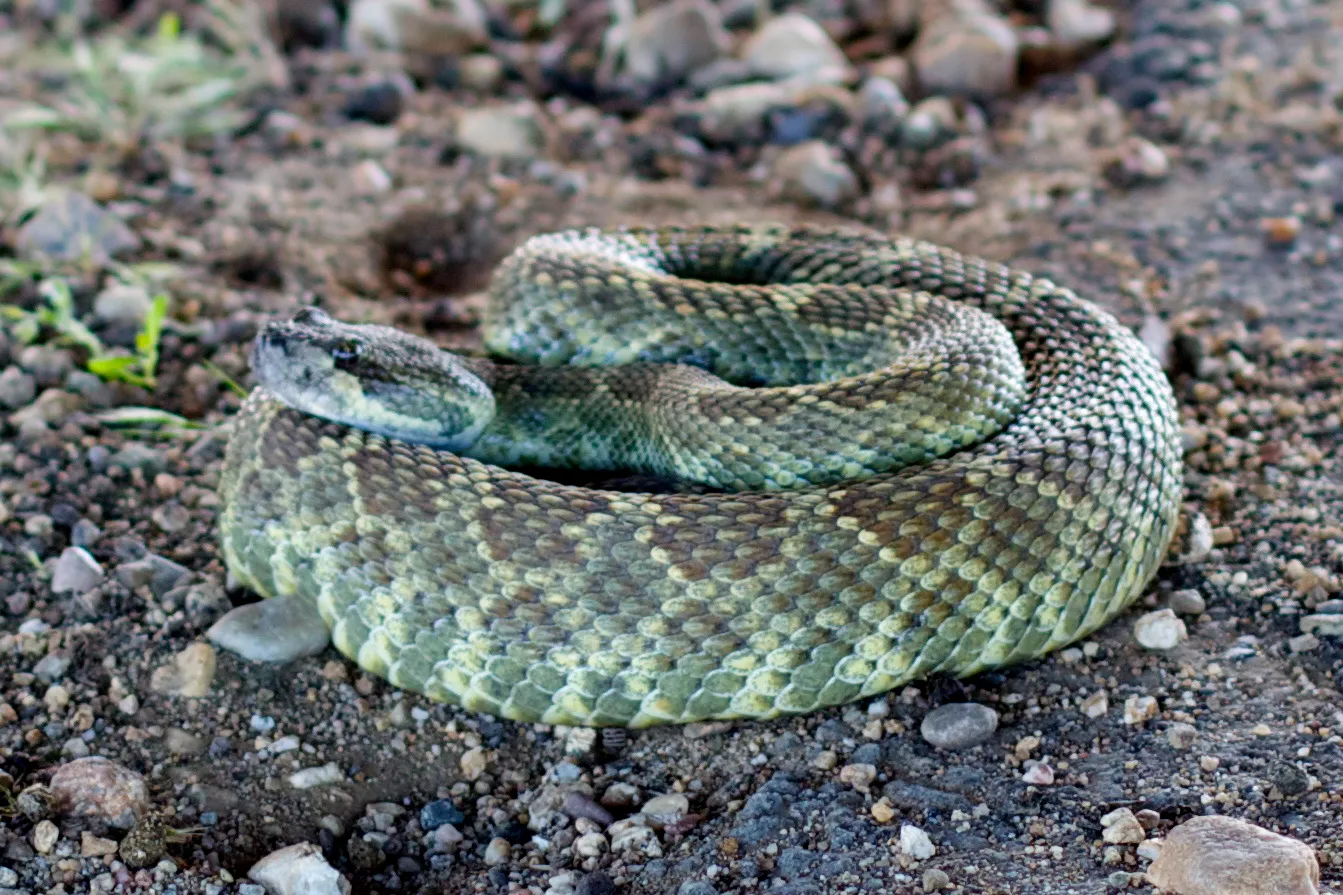
Mojave green snakes have a vibrant green coloration with light green or yellowish crossbands.
They have elliptical pupils and a triangular-shaped head.
Importance: Unique appearance aids in species identification for research, conservation, and management purposes.
Ecological Implications: Their coloration serves as camouflage, helping them blend into their habitat and avoid predation.
5. Dentition and Bite Force:
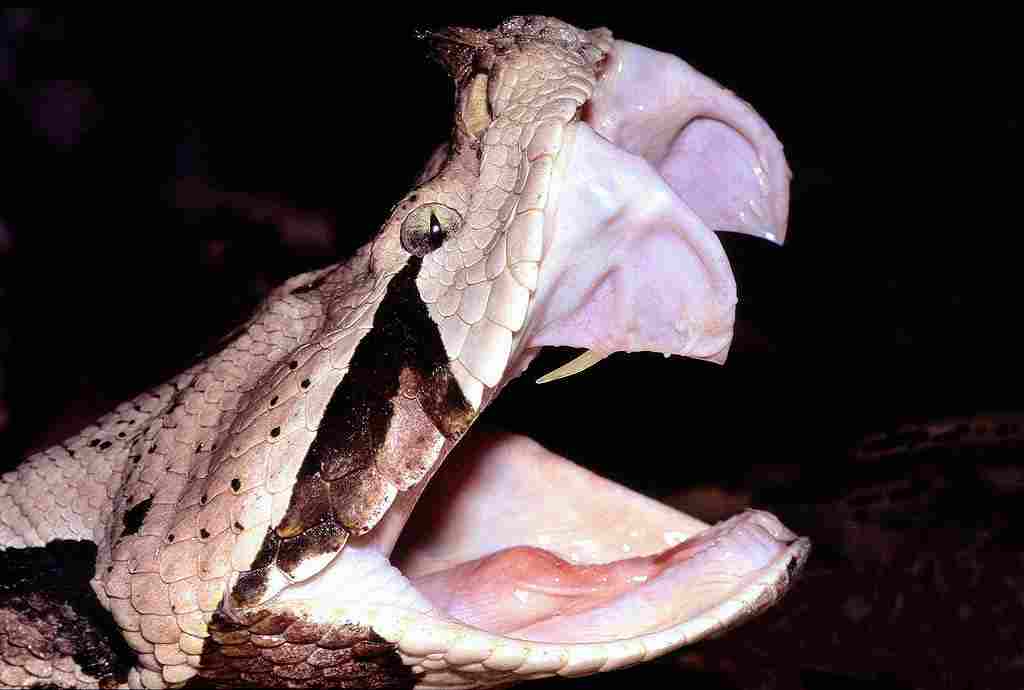
Mojave green snakes possess long, hollow fangs connected to venom glands, typical of pit vipers.
Bite force is estimated to be around 100-150 pounds per square inch (psi).
Importance: Their venomous nature and bite force play a crucial role in controlling prey populations and defending against predators.
Ecological Implications: Their venomous bite affects prey populations and influences the dynamics of predator-prey interactions within their ecosystem.
6. Diet:
Mojave green snakes primarily feed on small mammals, such as rodents, lizards, and occasionally birds.
Importance: They help regulate prey populations, maintaining ecological balance within their habitat.
Ecological Implications: Their feeding habits influence the population dynamics of their prey species, which in turn can affect vegetation and other trophic levels.
7. Behavior:
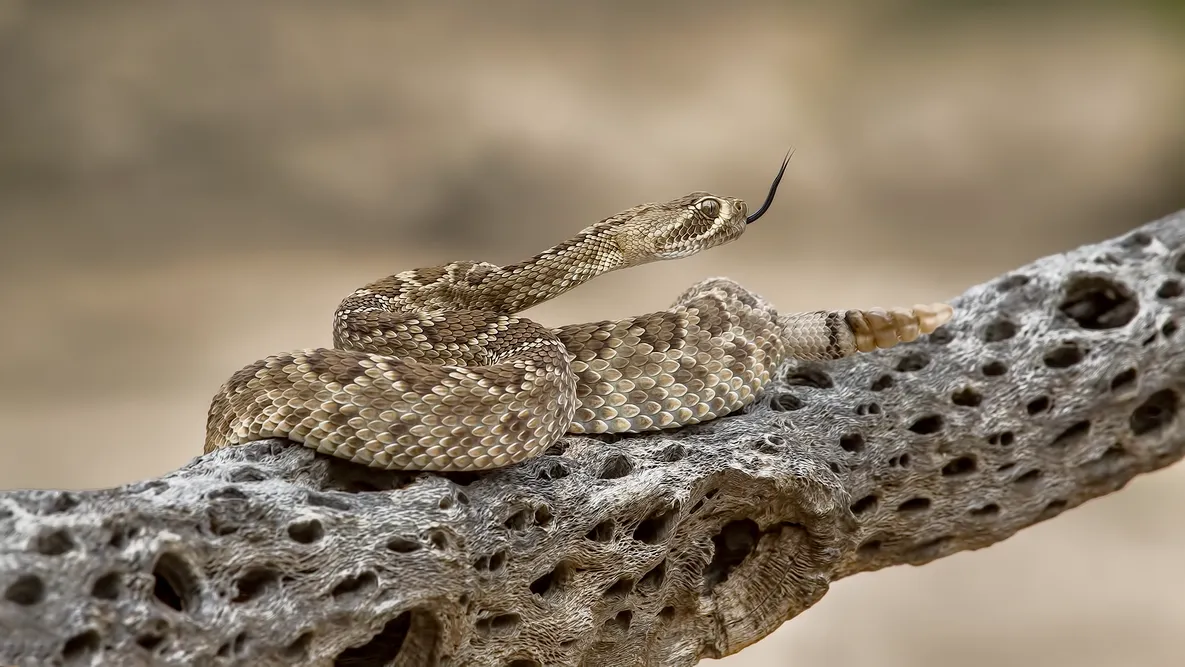
Mojave green snakes are primarily terrestrial and nocturnal, seeking shelter during the day and actively hunting at night.
They are ambush predators, relying on stealth and camouflage to capture prey.
Importance: Understanding their behavior helps in studying their ecological role and developing conservation strategies.
Ecological Implications: Nocturnal behavior reduces competition with diurnal predators and prey, shaping their niche within the ecosystem.
8. Sounds/Vocalization:
Mojave green snakes are not known for vocalizations but may produce hissing sounds when threatened.
Importance: Lack of vocalization indicates reliance on other sensory mechanisms for communication and survival.
Ecological Implications: Limited vocalization suggests reliance on visual, olfactory, and vibrational cues for communication and predator avoidance.
9. Habitat:
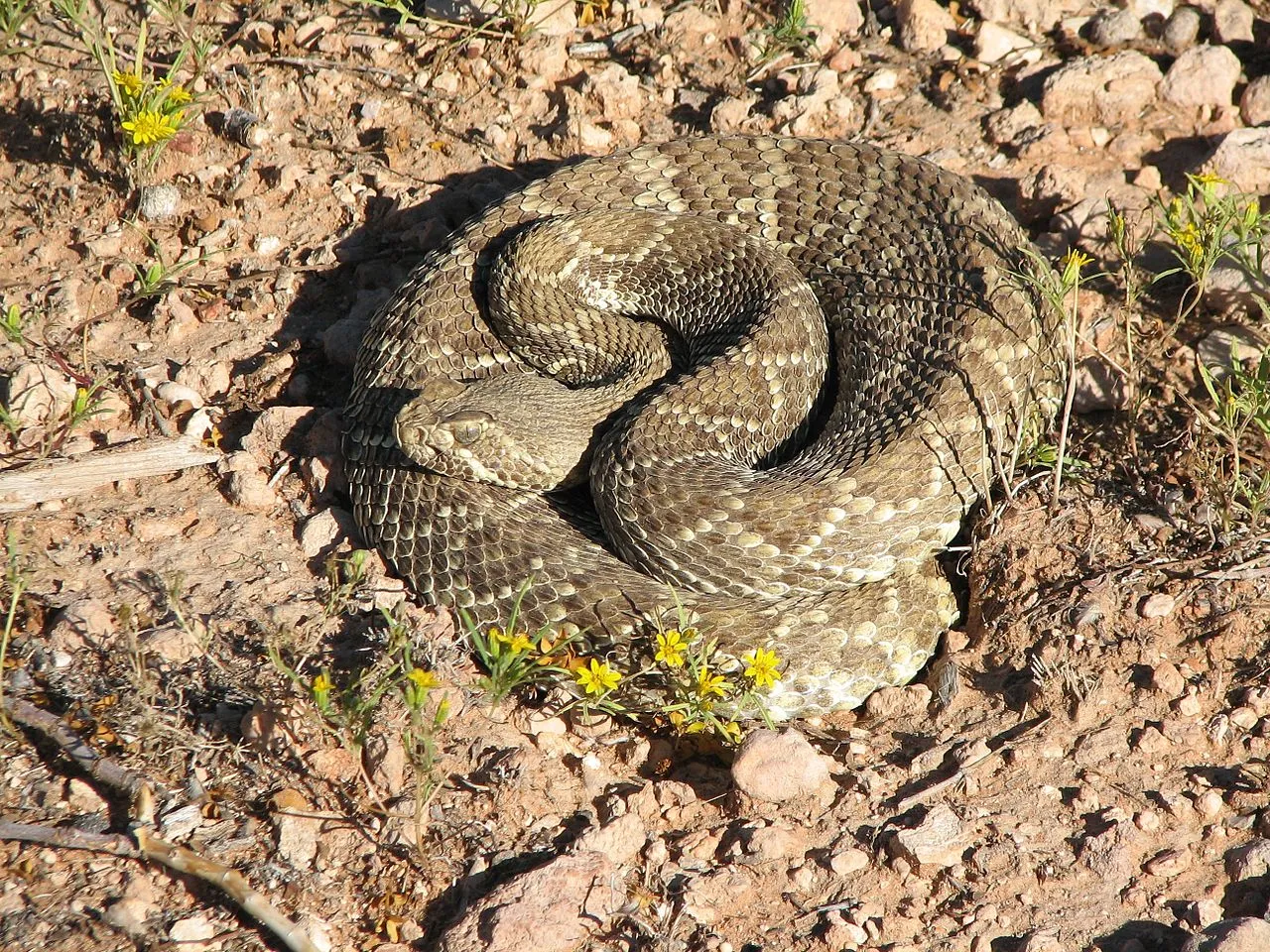
Mojave green snakes inhabit arid and semi-arid regions, including deserts, grasslands, and scrublands.
They are often found in rocky areas with crevices and burrows for shelter.
Importance: Understanding habitat preferences aids in conservation planning and habitat management.
Ecological Implications: Their habitat selection influences their distribution, abundance, and interactions with other species in the ecosystem.
10. Geographic Range and Distribution:
Mojave green snakes are native to the southwestern United States and northern Mexico.
They are found in states such as California, Nevada, Arizona, Utah, and parts of New Mexico.
Importance: Knowing their range helps in assessing their conservation status and implementing targeted conservation efforts.
Ecological Implications: Their distribution influences the composition and dynamics of local ecosystems, including predator-prey relationships and species interactions.
11. Tracks:
Mojave green snakes leave distinctive tracks in sandy or loose soil, characterized by a series of parallel lines with occasional drag marks from their body.
Importance: Tracking their movements aids in studying their behavior, habitat use, and population dynamics.
Ecological Implications: Monitoring tracks provides insights into their distribution, activity patterns, and potential impacts on other species within their habitat.
12. Reproduction:
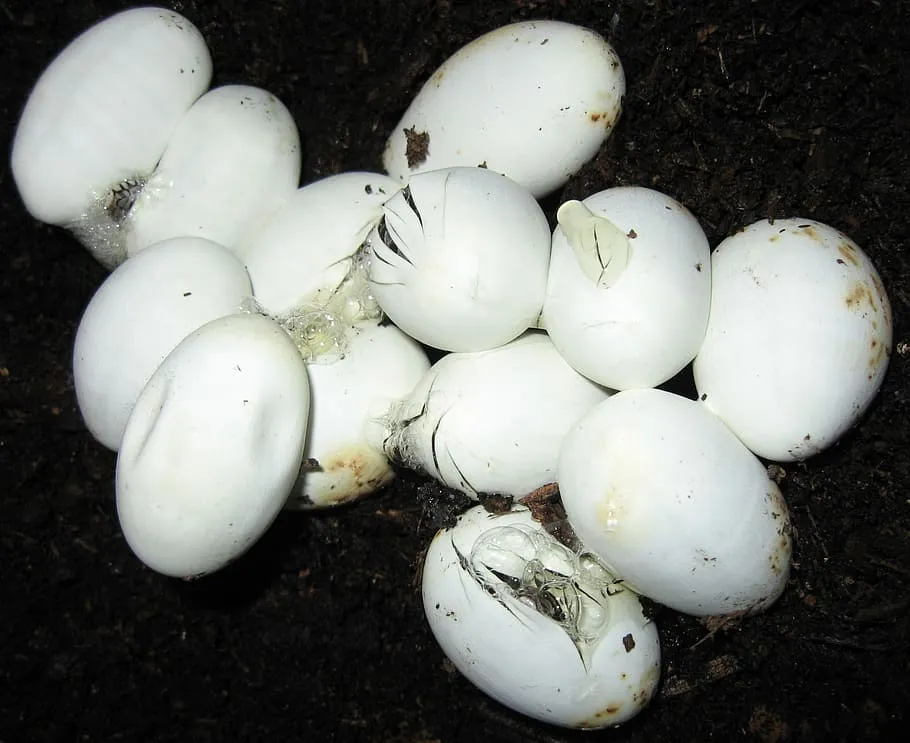
Mojave green snakes are ovoviviparous, meaning they give birth to live young.
Mating typically occurs in the spring, with females giving birth to a litter of 4 to 10 offspring in late summer or early fall.
Importance: Understanding reproductive biology helps in managing populations and assessing their reproductive success.
Ecological Implications: Reproductive patterns influence population dynamics and genetic diversity, affecting the resilience and adaptability of Mojave green snake populations to environmental changes.
13. Lifespan:
Mojave green snakes have a lifespan of around 10 to 15 years in the wild, although some individuals may live longer in captivity.
Importance: Knowledge of lifespan helps in evaluating population dynamics, demographic trends, and long-term conservation strategies.
Ecological Implications: Lifespan affects population turnover rates, genetic diversity, and overall population resilience to environmental pressures such as habitat loss and fragmentation.
14. Major Adaptations:
Mojave green snakes have several key adaptations for survival, including:
Venomous fangs for subduing prey and defense against predators.
Cryptic coloration and pattern for camouflage in their arid habitat.
Nocturnal behavior to avoid diurnal predators and exploit cooler nighttime temperatures for hunting.
Importance: These adaptations enhance their ability to thrive in their environment and fulfill their ecological role.
Ecological Implications: Adaptations influence their interactions with prey, predators, and competitors, shaping their ecological niche and impact on the ecosystem.
15. Conservation Status:
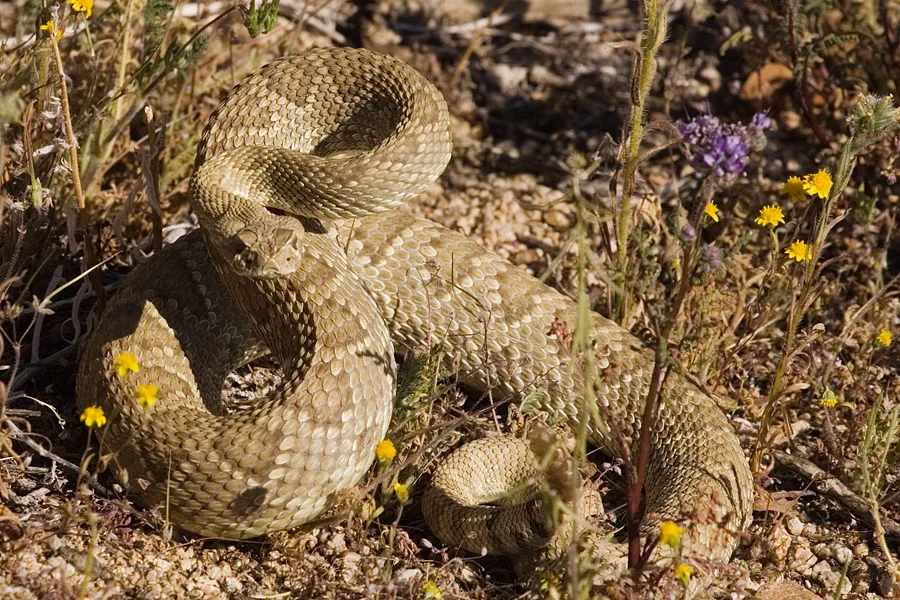
Mojave green snakes are listed as a species of least concern by the International Union for Conservation of Nature (IUCN).
However, localized threats such as habitat loss, road mortality, and persecution by humans can impact certain populations.
Importance: Monitoring their conservation status helps in identifying and addressing threats to their populations.
Ecological Implications: Conservation efforts aim to maintain healthy Mojave green snake populations, which play a role in maintaining ecosystem balance and biodiversity.
16. Domestication and Suitability as a Pet:
Mojave green snakes are not typically kept as pets due to their venomous nature and specialized care requirements.
Venomous reptiles pose safety risks to inexperienced keepers and require specific husbandry practices.
Importance: Recognizing their unsuitability as pets helps in promoting responsible pet ownership and wildlife conservation.
Ecological Implications: Discouraging the pet trade of Mojave green snakes helps in preserving wild populations and preventing potential ecological disruptions caused by their removal from their natural habitat.
